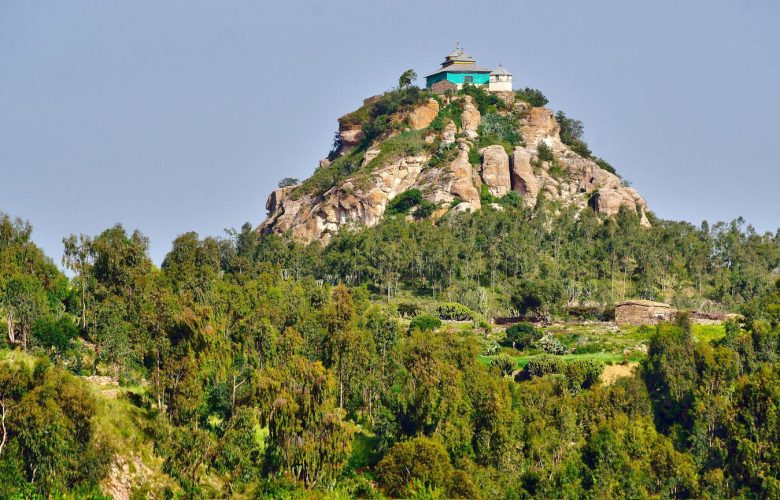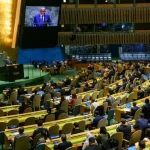Culturally, Ethiopians show good attitude towards local and foreign gusts. When they come across gusts, they receive with embracive hand and let their home to the visitors to stay even leave their bed to the gusts and sleep on floor and such cultural practice has continued for centuries.
Country’s long tradition proved that Ethiopians show compassion to gusts without expecting any return be it materially or emotionally. Even if they don’t have financial capacity to host the guest, they resort to get loan from the neighbors to accommodate them. Sometimes, they spend what they save for time of hardship and assume entertaining visitors as a good chance in their life time.
During the last five years, the government has exerted remarkable effort to build and develop new tourist destinations in various parts of the country.
One can observe some of the tourism destinations in several parts of the capital. For instance, a new park is constructed on mount Entoto in the northern part of the city and numerous local and foreign gusts visit the place particularly on the weekends. There are hotel accommodations, horse and bicycle riding places. There are also playing fields for children.
Besides, a visitor can see the entire city and impressed with its beauty by looking down wards from Entoto Park. The surrounding forest also captures vision of the visitor and adds happiness.
On top of serving as a tourist attraction, construction of the park there helps forest conservation works, and creates job opportunity to citizens. According to sources, the government allocated millions of Birr for the construction of the park and asphalt roads that heads to the park.
Unity Park constructed inside the compound of Menelik II palace is also boosting tourism. In the compound the historical site which served as residential place for Emperor Menelik II can be seen. The palace also served as a residential house for the consecutive leaders of the country: Emperor Hailesilassie I, President Mengistu Hailemariam, Prime Ministers Meles Zenawi, Hailemariam Desalegn and Abiy Ahmed (PhD).
The hall where the Kings were served meals is renewed and the place where they sat also renovated. In the park, a new habitat of plants and animals is also established and visitors can see different wild animals including lions inside the zoo. Thus, The Park is generating income.
he other park located nearby the Unity Park known as “Friendship Park” also plays pivotal role in accommodating visitors, providing various outdoor services like wedding ceremonies and conferences so that it generates its own income. Particularly in the weekends, thousands of visitors enjoy the park. The park’s captivating features such as its topography, artificial lake and the fountains add beauty to the park and pleasure to the visitors.
The government’s initiation to construct such tourist attractions by allocating millions of Birr indicates how it is committed to boost the tourism sector.
More tourist attractions have also been constructed in different parts of the country during the last five years. The breathtaking landscapes of Koysha, Gorgora and Wonchi can be cited as good examples in this regard. Halala Kella, being a part of Koysha, has its own resort located in the superb of Gibe River artificial lake.
It has its own tangible heritage, the wall constructed by king Halala which covers 1225 square kilo meter and has 7 gets and residential palaces inside. The construction process of the wall took 200 years and constructed by seven generations’ rally.
The Chebera Churchura Natural Park located in the east of Halala Kella in Konta zone is also one of the best tourist attractions. There are three lakes inside the park and wild animals such as African Elephant, hippopotamus, the endemic white fish found only in Ethiopia, crocodile and endemic birds. The Koysha Hydroelectric power generation dam is also under construction near the park. The number of tourists visiting the places is increasing from time to time.
In Konta and Dawro zones, there are various ethnic groups with their own cultures, languages, traditional dishes, and ways of dressing, haircut, singing and dancing, grief and funeral ceremonies. And these all are parts of the heritages which can be taken as asset for the tourism industry.
Wonchi Park located in the western Oromia zone which is under construction is expected to create job opportunity for many and boost the sector after its completion. The Gorgora Park located near Gondar town being constructed on the shore of Lake Tana eying its completion soon is also expected to boost the tourism industry.
Tourist attraction heritages should be protected and to this end, various measures should be taken and among others, educating the public to raise awareness is the primary task. Public awareness should be created sustainably and might be vary depending on the nature of the sites. Awareness creating training toward preserving the heritages should be provided to the elders and local community leaders because they have their own understanding regarding the heritages including knowledge inherited through oral literature. In addition, the training should be given to the kebele officials, principals of the nearby schools and other influential figures.
In such a way, it is easy to approach the whole community members and enables raise their awareness. Organizing heritage clubs in the surrounding villages may also contribute to the conservation.
Creating enabling environment to the community members to participate in the tourism development through informing the plan and making them beneficial from the sector is vital because it creates belongingness and helps to build positive attitude towards tourism and the tourists. Recently, Ambassador Nasise Chali, Minister of Tourism announced that tourist destinations built by the government and the private sector is improving the flow of tourists to Ethiopia.
The Minister stated that the nation has now been able to return the tourism sector to the position it had before the outbreak of COVID-19. The mid-term implementation of the first phase of the 10-year perspective development plan and the second phase of the mid-term plan to be implemented from 2016-2018 were reviewed and their weakness and strength were discussed with stake holders.
During the occasion, Nasise pointed out that activities carried out over the past 10 years in the tourism sector have not been as desired mainly due to COVID-19 and security issues. However, better achievements have also been registered in the development of the sector in the concluded Ethiopian budget year as the nation was able to return the flow of tourists to what it was before the outbreak of COVID-19.
In this regard, the contribution of tourist destinations built by the government and the private sector in various parts of the country is huge. The Minister also disclosed the plan of constructing 10 new tourist destinations over the coming ten years, in addition to renovating the existing ones by engaging the private sector. She further stated that promoting tourist destinations under construction will be intensified.
The Minister pointed out that over the coming years, a great deal of attention will be given to intensify tourism conference by using Ethiopia’s comparative advantage as a seat of African Union and many international offices and diplomatic residences.
However, expanding tourism sites should go in line with the stretching of infrastructure such as roads, hotels, electric power, piped water, travel agents, vehicles, internet services, telephone services and the exchange centers of local currency with foreign currency.
As it is known in Ethiopia, in addition to natural tourist destination, there are cultural and religious sites which have been visited for many years. These include the Axum obelisk, the Lalibela rock hewn churches, the Gondar Palace, the Sof oumar cave, the Jugol wall in Harar and ancient mosques to mention but a few.
But there is a gap in infrastructure provision. Power interruption is also a common problem in various parts of the country which again negatively affects internet connection. The absence of standardized lodges, sufficient water and sanitation services have their own draw backs on tourism business. It is true that currently the government is working energetically to enhance the nation’s electric power generation capacity.
In the last two decades’ for example, the government has been constructing hydropower dams in various parts of the country and some of them are completed and others are under construction and when the construction is completed, the power supply to the main grid will be increased by many fold. Some of the problems related to the power interruption are expected to be resolved soon. It was learned that five turbines of the Abbay Dam will be operational this year and expected to ease the chronic problem related to energy supply.
The old roads which lack maintenance largely contribute for the damages of vehicles and this again discourages travel agents and refrains to continue their business in the sector.
Side by side with these, the deteriorating security situation in various parts of the country is harming the sector. Travel agents refrained to drive car towards the tourist sites threatened by unexpected violence eruption. The reduction of the number of tourists who would be hosted in four star hotels in the capital due to the security reasons left the hotel owners to uncertainty.
Be it is, the sector’s performance is encouraging. According to the recent World Tourism Organization report, domestic and international visitors spend remarkable amount of money which is injected in the Ethiopian economy has reached USD 2.4 billion. It greatly supports to accelerate the Ethiopian GDP. The Ethiopian travel and tourism industry represented 7% of total GDP in 2019. This economic activity supported the nation by creating 2 million jobs, it was learned.
Source: Ethiopian Herald





